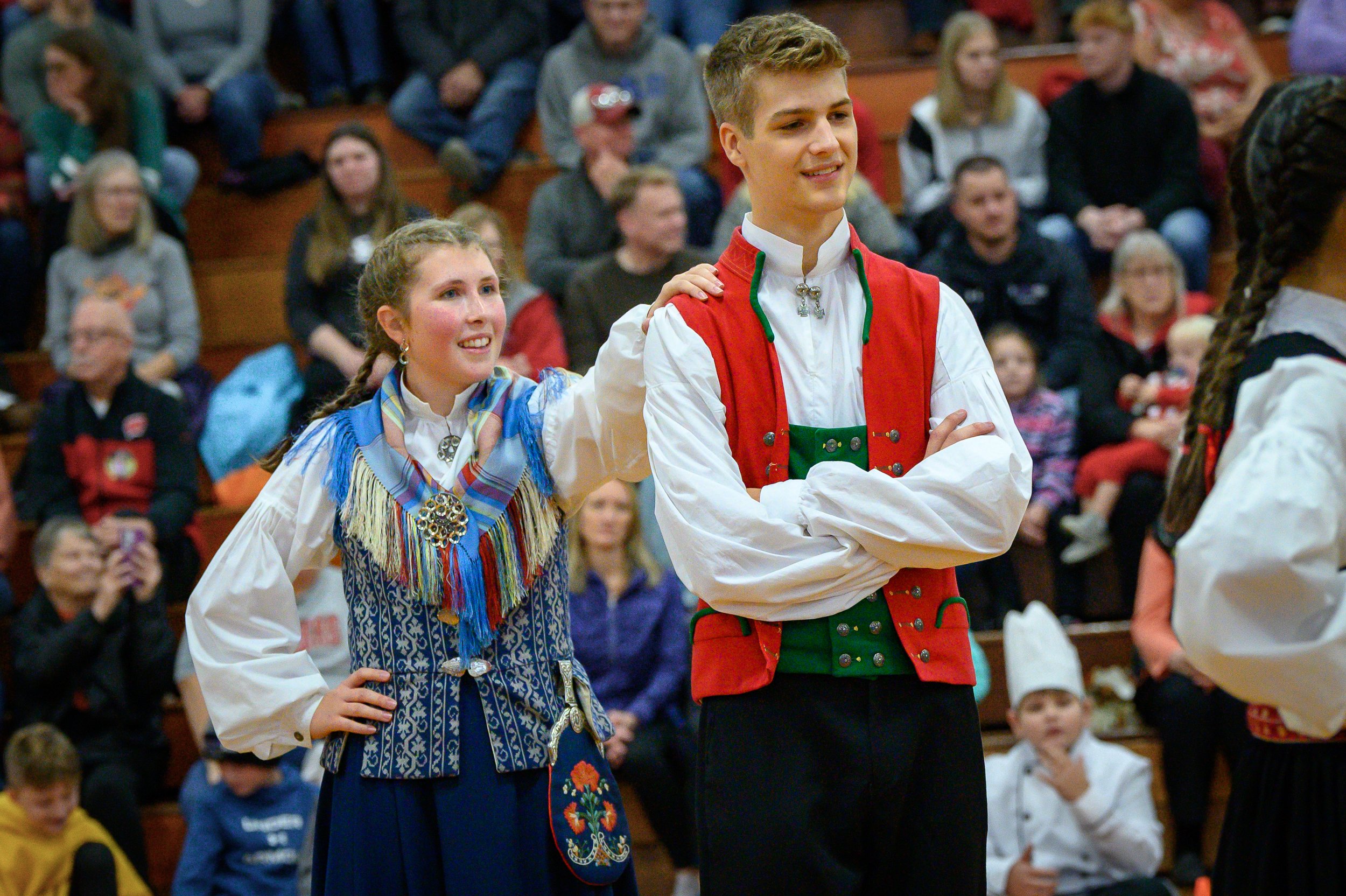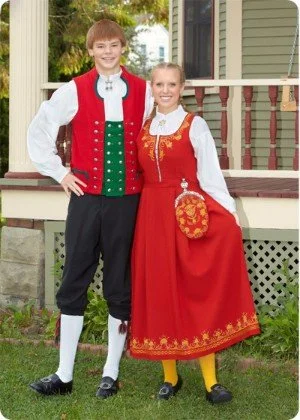The Bunad: Norwegian Dance Attire
The bunad, meaning ‘clothing’, is a traditional Norwegian costume worn by both men and women. The more ‘authentic’ bunads are modeled off folk attire worn in certain regions that developed over the centuries. Even though folk wear (commonly called ‘folk costumes’ in Norway) evolved because of daily life, regional traditions and celebrations, the bunad only borrows from the more festive forms of traditional folk clothing.
The bunad can either come from established rural traditions or have a more modern design inspired by historical patterns and cuts. Traditionally bunads represented the family home and the area people came from but now in the modern world where moving from place to place is a necessity, Norwegians wear the bunad tradition from the place to which they have the strongest attachment.
Today the bunad is worn for celebrations and special occasions. During the wedding season (May-June), you often see Norwegians dressed in their bunads on Saturdays walking to and from Churches. Baptisms and confirmations, balls and Norwegian Constitution Day (May 17th) are typically bunad wearing days.
The normal fabric of a bunad dress or coat is wool. Mens pants are often made from hodden which is wool that has been pressed into shape rather than woven. Shirts are made from either linen or cotton, and shawls and aprons are normally wool or silk. A purse is part of nearly every female’s bunad with matching fabric and embroidery. When a woman is getting married in her bunad she wears a gold crown, headdress or elaborate jewelry on her head. She also carries a small bible in her purse and can wear a veil if it has been designed into her traditional costume. It is also common for married women to wear a silver belt. Women who have authority, such as matrons, carry a key as symbolic decoration.
Enjoy Our Beautiful Bunads Throughout the Years











